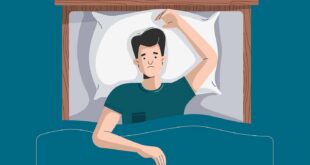OBSESSIVE COMPULSIVE DISORDER OF ANXIETY.
The essential feature of this disorder is recurrent obsessions or compulsions sufficiently severe to cause marked distress, to be time-consuming, or to interfere significantly with the person’s normal routine, occupational functioning, or usual social activities or relationships with others (APA, 1987).
Obsessive compulsive disorder was classified under the anxiety disorders and with the anxiety states with the rationale that even though the predominant symptoms are obsessions or compulsions rather than anxiety itself, anxiety is almost invariably experienced if the individual attempts to resist the obsessions
or compulsions.
In addition, most patients with the disorder also experience considerable anxiety apart from the obsessions and compulsions.
Obsessions and compulsions secondary to panic and agoraphobia are often readily amenable to treatment; obsessions and compulsions characteristic of obsessive compulsive disorder are far more refractory to change.
The phenomenology, course, and treatment of obsessive compulsive disorder differs substantially from the other anxiety disorders.
Although we will not discuss the treatment of obsessive compulsive disorder, it is important to differentiate between patients meeting this diagnostic criteria and other anxiety disorders.
For instance we have found that about 3 to 5 percent of patients who wish to participate in our anxiety disorder studies meet the DSM-III-R criteria for obsessive compulsive disorder. By DSM-III-R definition,
obsessions are “persistent ideas, thoughts, impulses, or images that areexperienced, at least initially, as intrusive and senseless. . .
The person attempts to ignore or suppress such thoughts or impulses or to neutralize them with some
thought or action” (APA, 1987). Compulsions are repetitive, purposeful and intentional behaviors that are performed according to certain rules, or in a stereotyped fashion (APA, 1987).
The behavior is not an end in itself, but is designed to produce or prevent some future event or situation.
However, either the activity is not connected in a realistic way with what it is designed to produce or prevent, or it may be clearly excessive.
The act is performed with a sense of subjective compulsion coupled with a desire to resist the compulsion (at least initially).
The individual generally recognizes the senselessness of the behavior and does not derive pleasure from carrying out the activity, although it provides a release of tension (APA, 1987).
 Therapy for anxiety Therapy for anxiety
Therapy for anxiety Therapy for anxiety



